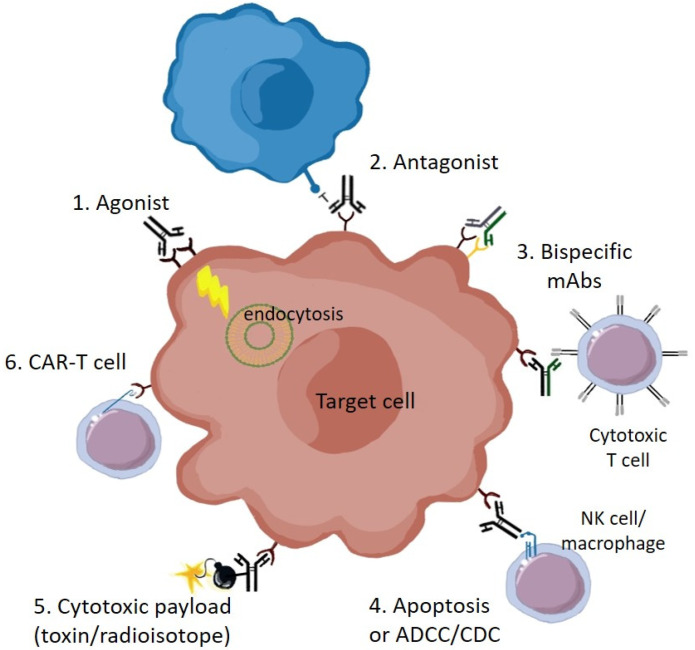Figure 1.
Therapeutic mechanisms of anti-Eph receptor antibodies: (1) Agonist mAbs can promote receptor clustering, tyrosine phosphorylation, signaling (with downstream effects on cell behavior such as cytoskeletal rearrangement), internalization and degradation; (2) Antagonist mAbs inhibit Eph receptor function, such as by blocking binding to ligand on adjacent cells (blue); (3) Bispecific antibodies, which concurrently bind distinct receptor types on the same cell, or on different cell types, such as to recruit T cells; (4) Apoptosis, or cell death, either directly due to signaling effects, or by immune-mediated ADCC (antibody-dependent cell-mediated cytotoxicity), or CDC (complement-dependent cytotoxicity); (5) Conjugation of cytotoxic drugs or radioactive isotopes; (6) Use of mAb antigen-binding domains for targeting of CAR-T cells. The target Eph-expressing cell could be either a transformed tumor cell or a non-transformed cell in the tumor microenvironment, contributing to the stroma, vasculature or immune regulation.

